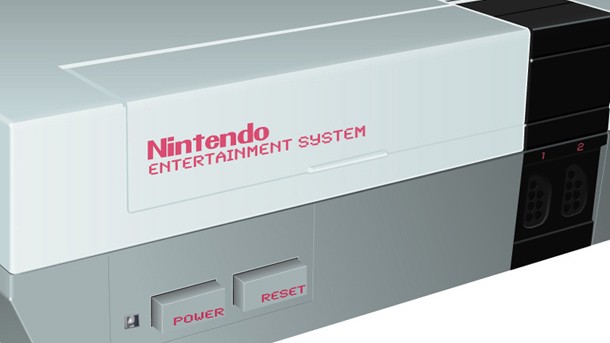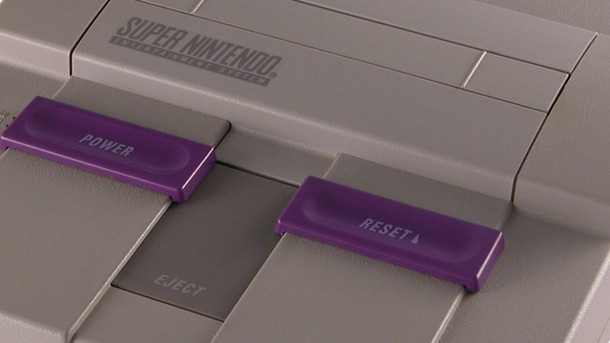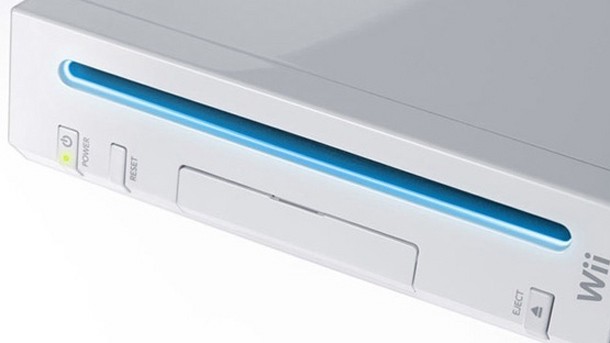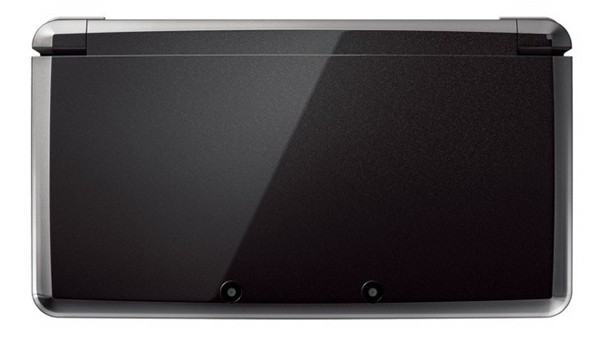Our extra-large special edition is here. Subscribe today and receive the 25% longer issue at no extra cost!
The Nintendo Difference: Nintendo’s Impact On Gaming

Nintendo has been involved in the video game industry for nearly four decades, and the company hasn’t remained as popular as it has by following other people’s lead. Nearly every generation, Nintendo has led a charge of innovation that has fundamentally reshaped the gaming world. These innovations haven’t always been well received, but Nintendo’s fingerprints are so firmly etched into our industry, that the company is arguably the most important figure in it. In honor of Nintendo’s official confirmation that it will reveal its next video game system at this year’s E3, we thought it was time to look back at the company’s innovative history.

1980: Game & Watch
Mattel may have beaten Nintendo to the punch with its 1977 release Auto Race, but Nintendo is credited as the company that made handheld gaming popular. Unlike other handheld electronics of the day, Nintendo’s Game & Watch systems were highly portable, had great battery mileage, and – most importantly – were entertaining. Where most electronic games used LED displays, Game & Watch systems used LCD screens, which gave players a higher level of screen detail and allowed Nintendo to use compact watch batteries. Later versions of Game & Watch even featured dual screens and compact foldaway designs – both iconic features of Nintendo’s popular DS and 3DS systems.

1985: NES
The NES’s greatest achievement may be the fact that it brought the video game industry back from the brink of death. The late ‘70s and early ‘80s were the Wild West of the video game industry. Video game publishers and manufacturers had no idea what they were doing, and many of them had only gotten involved in the industry because they believed there was a great deal of money to be made in this new form of electronic entertainment. As a result, tons of cheap, low-quality, unlicensed software began flooding the market. The NES’s greatest innovation, therefore, might not have been hardware related; Nintendo reinvented how software was managed – thereby changing how video game makers approached their craft.
When the NES arrived on the scene in the mid-‘80s, Nintendo started putting a Seal of Quality badge on their games. Thanks to the NES’s region lockout chips, the publisher was also able to begin managing the amount of third party software released on its console. When Nintendo started to care about the games released on their system, suddenly so did their consumers.
The problem was that Nintendo had to first convince some early adopters to purchase their machine. In doing so, Nintendo all but invented the peripheral market. When Nintendo first started marketing their NES system, many believed that the video game fad had run its course, and retailers were reluctant to put another video game system on store shelves. To combat public opinion, Nintendo packaged their NES consoles with a robotic accessory named R.O.B. (Robotic Operating Buddy). Many retailers ordered the NES on faith that the market for toy robots would always be strong. R.O.B. was only compatible with a few sub-par titles, but by the time consumers were playing those titles, the robot had already done his job. R.O.B. acted as a kind of Trojan horse to get NES systems into people’s homes in the first place. Furthermore, Nintendo’s robotic accessory acted as a kind of precursor to all the other guitar, skateboard, and Power Glove peripherals that have saturated the market throughout the years.
One of the final NES innovations was the system’s controller. It may be hard to believe now, but 30 years ago no one understood how players should interact with their video game systems. Many of the early controllers were a mess of dials, roller balls, and knobs. The NES controller, on the other hand, fit neatly into players’ hands. Gamers could easily hit every button on the controller without moving adjusting their grip or twisting the controller underneath them.
Even the unit’s d-pad seemed novel at the time. While joysticks of the day have a lot in common with modern analog sticks, Nintendo’s directional pad was the most elegant way to play 2D titles of the era. Nintendo went so far as to patent the technology behind its d-pad, so that all of its competitors would have to come up with their own cross pad designs. This is why most other d-pads pale in comparison (we’re looking at you Microsoft).
Further advances followed in the years to come. For example, Nintendo began experimenting with manufacturing cartridges with built-in batteries, allowing players to save their games for the first time. But you hardly need stronger evidence to prove that the NES was one of the most – if not the most – important pieces of gaming hardware in history.

1989: Game Boy
Again, Nintendo wasn’t the first company to release a handheld with interchangeable cartridges (the Milton Bradley Company released the Microvision 1977), but Nintendo seems to have popularized the idea with the Game Boy. During its lifecycle, the Game Boy played host to a number of innovations. The Game Boy introduced a whole generation of gamers to Tetris, since that iconic puzzle game came packaged with the original handheld system. The Game Boy was the first handheld to include volume controls, provide a headphone jack, and allow systems to link together to play multiplayer games. If that wasn’t enough, the Game Boy introduced us to gyroscoping. Long before motion controls were popularized with the Wii and iPhone, gamers were making their Game Boy Colors do cartwheels to play games like Kirby Tilt 'N' Tumble.

1991: SNES
Nintendo’s Super Nintendo Entertainment System was capable of scaling and rotating two-dimensional graphics to produce effects that were unheard of in their day. Nintendo’s research into enhancement chips that could be built into a game’s cartridge allowed for early 3D graphics in titles like Star Fox. However, some of the SNES’s longest-lasting innovations revolved around its controller. The SNES controller was more ergonomic than the NES controller, and it established the diamond shaped, four face button layout, and introduced players to the concept of shoulder buttons. The controller’s face buttons were even color coordinated – a subtle but lasting advance.

1995: Virtual Boy
The Virtual Boy may not have been Nintendo’s finest hour: the system hurt your eyes, caused neck strain, devoured batteries, and was probably the least portable “portable” system ever released. On top of all that, the system could seriously damage your eyes. On the other hand, the system produced 3D graphics (albeit crude) long before the 3DS was even a dream. Nintendo’s Virtual Boy also featured twin d-pads, which could be considered a precursor to modern dual analog controllers.

1996: Nintendo 64
With Nintendo’s refusal to move away from cartridge-based games, some felt that Nintendo’s N64 was a step behind the Sony PlayStation, but the N64 still played host to a few innovations. Not only was the N64 controller the first full analog controller, but it was also the first controller to deliver rumble feedback via a Rumble Pak attachment. Japanese gamers eventually had access to the Nintendo 64DD, a disk drive attachment that used very large magnetic disks to provided gamers with re-writable storage for their console. This add-on came a little too late in the console’s lifecycle to be useful, and ended up being a commercial failure that never saw a U.S. release, but this system add-on still featured some interesting software. One Creator program could be seen as a precursor to the Wii’s Mii software.

2001: GameCube
While the system’s handle and its jellybean controller could be innovations that just failed to catch on, the GameCube played host to one significant advance that has benefited every successive console. A few years after the console’s release, Nintendo introduced the Wavebird controller. While this controller wasn’t technically the first wireless controller, the Wavebird had one feature that allowed it to trump all other wireless contenders – it actually worked! With the Wavebird, players didn’t have to sit super close to their TVs, or make sure the device was always pointed at their console, or wrap their walls in aluminum foil. The Wavebird did exactly what it claimed to do without fuss. Using radio frequencies, the Wavebird produce a stable wireless signal. And best of all, it didn’t drain your batteries like some kind of alkaline vampire.

2004: Nintendo DS
Nintendo’s DS system was so novel that people almost didn’t know what to make of it at first. The device’s two separate LCD screens, built-in microphone and wi-fi capabilities allowed designers to create several unique games like The Legend of Zelda: Phantom Hourglass, Grand Theft Auto: Chinatown Wars, and New Super Mario Bros. However, it was the system’s touch screen that will forever be remembered. Nintendo’s DS had players scribbling and swiping at a screen before mobile phones jumped in on the craze.

2006: Wii
The Wii’s controller was a big difference maker for Nintendo. The motion sensitive controller allowed the company to design a library of unique software. However, motion controls may not be the Wii’s biggest innovation. With the Wii, Nintendo began a marketing push to attract gamers outside of traditional stereotypes. Similar to R.O.B. the Robot nearly two decades prior, the Wii was designed to attract an audience that wouldn’t normally buy a gaming console. The Wii may have been underpowered in terms of hardware, but thanks to its ability to operate unique motion-based software, it proved to be nothing but a sales juggernaut.

2011: Nintendo 3DS
Iterating on Nintendo’s successful DS handheld, the 3DS’s big innovation was the addition of glasses-free 3D gaming. While we’ll have to wait and see if the 3DS proves to be as popular as its predecessor, there is no reason to suspect that the 3DS won’t dominate much of our gaming free time over the next several years.
Given Nintendo’s track record, it’s likely that Nintendo’s coming system has some remarkable new features that will shake up the gaming world in the coming years. We can only imagine what those will be, but we can’t wait to find out.

Get the Game Informer Print Edition!
Explore your favorite games in premium print format, delivered to your door.
- 10 issues per year
- Only $4.80 per issue
- Full digital magazine archive access
- Since 1991









